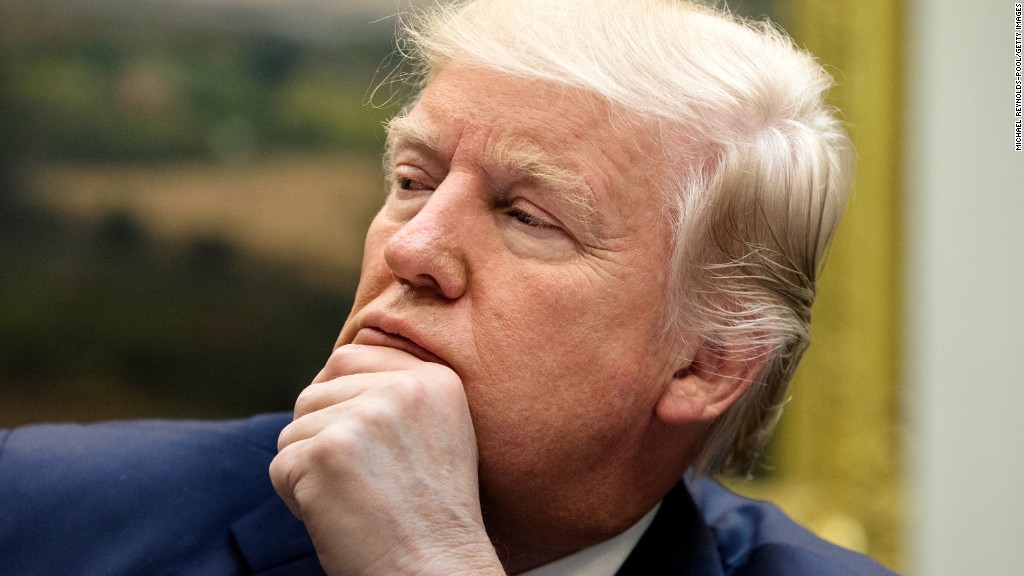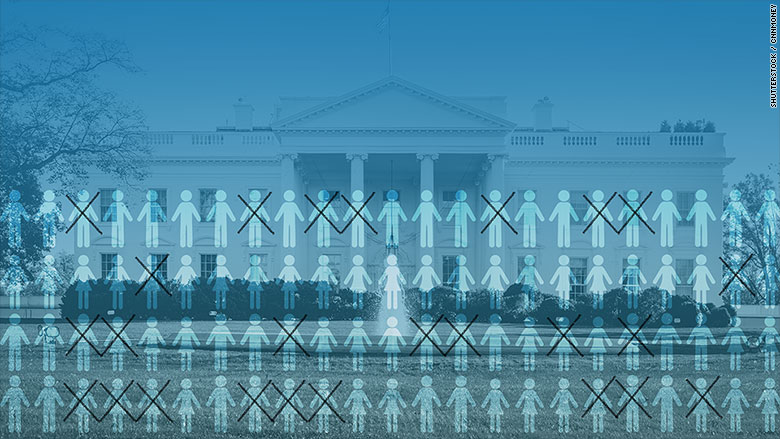
President Donald Trump is taking aim well-paying jobs with attractive benefits at the nation's largest employer -- the federal government.
The budget proposal he unveiled Thursday would slash discretionary spending at many agencies, with the exception of defense and border enforcement. While the document doesn't specify how many jobs would be cut, experts say tens of thousands of government jobs could be eliminated if Congress approves this budget.
"It's ironic since President Trump says he cares about American jobs," said Jacqueline Simon, policy director for the American Federation of Government Employees, the largest union representing federal workers. She said these jobs are critical to minorities and veterans, who make up a bigger percentage of the federal work force than in the private sector.
"[Federal jobs] are a very important means to gaining middle class status for women and minorities, as is has been for generations," Simon said.
Related: What America would look like under the Trump budget
The U.S. government has just over 2 million civilian employees, not including the Postal Service, which is an independent agency that is not funded by taxpayers. Walmart (WMT), the nation's largest private sector employer, has 1.5 million U.S. employees.
Federal workers earn an average of $81,665, according to the Office of Personnel Management. That's more than the average pay in manufacturing, which is $67,000, or construction, which is $60,000. But Simon says that federal workers are paid more because of the skills and educational requirements necessary for many of the positions.
"There are scientists, and engineers, lawyers and accountants, doctors and nurses," she said. "There's a tremendous proportion of the federal work force who are highly educated professionals."

Simon says when those job skills are taken into account, federal workers are paid less than their private sector counterparts, especially after a federal pay freeze that was in effect from 2011 to 2013.
But benefits are better for many federal workers, said Chris Edwards, an economist with the Cato Institute, a conservative think tank that advocates sharply reduced federal spending. "Private sector workers do not have such gold plated pensions."
Most federal workers can still count on a traditional pension plan that pays a set amount every month they live in retirement, but those are fairly rare in the private sector.
Related: Trump wants to cut the smallest part of the federal budget
While Trump and other critics of the federal government often complain about a bloated federal work force, the numbers don't bear that out.
In fact, the number of federal workers in 2016 was virtually unchanged from where it stood 40 years ago, despite dramatic growth in the nations' population force since then.
Only about 1.5% of the U.S. workforce is employed by the federal government today, compared to 2.2% in 1988, Ronald Reagan's last year in office.
Trump's proposed budget wouldn't just put federal employees out of work -- a lot of the spending cuts in spending will affect state and local governments, which may have to slash jobs as a result.
"You've got millions of people in state and local governments depending on the flow of federal dollars," said Edwards. "I would say it will eliminate classic bureaucratic positions and functions -- paper shufflers at the federal level, the state, and local governments."


